
Eating porridge from a 100-year-old silver spoon is a quirky once-in-a-lifetime experience.
Not that it makes any difference to the taste but it was a first for me so I cherish the memory.
The occasion was a stay at Traquair, reputedly Scotland’s oldest continuously inhabited house, a sprawling 900-year-old, 50-plus room countryside mansion, my companion and I had the pleasure of staying in on the way from Edinburgh to Cairnryan to catch the ferry to Belfast.
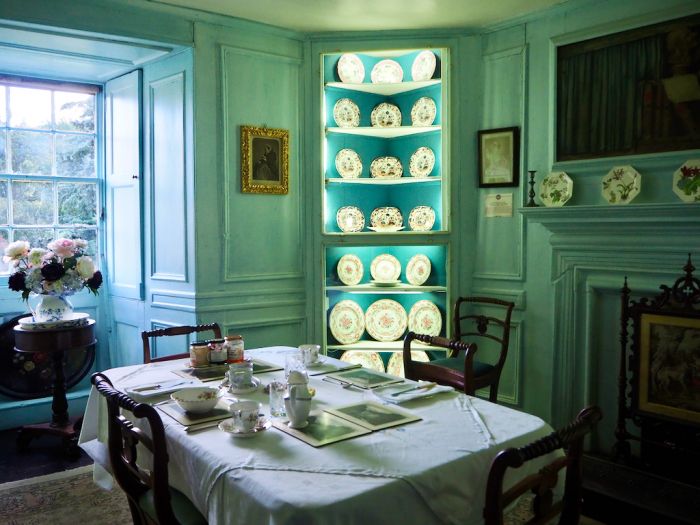
So packed with historic artifacts is Traquair, it has its very own museum, housed in an upstairs room. Alongside Neolithic objects including ax heads, you’ll find a 16th century Spanish Armada chest featuring a complex locking system and a plethora of 19th century artifacts such as pistol holders, knives, forks, cutlery, snuff boxes, silver buckles, period costumes, beaded baskets, velvet handbags, carnelian bracelets, colifichets, (silk embroideries on paper), even a silver dog collar and tongue scrapers.
This may seem like a lot but there’s so much more to see at Traquair, all arranged under the discerning eye of friendly Catherine Maxwell Stuart, who represents the 21st generation of the Stuart family to occupy this historic house. The earliest charter issued from Traquair was in 1107 when it was a small hunting lodge.
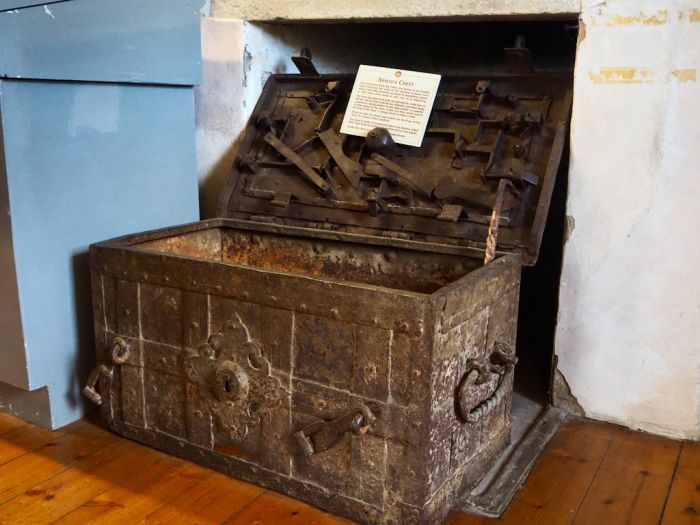
Let’s start with the room appointed to my companion and I, then make our way elsewhere, up and down well-worn stone steps that could tell an intriguing tale or two about the feet that walked upon them over the centuries including Mary Queen of Scots, who later found her head on the execution’s block, orders of her cousin, Queen Elizabeth of England.
Our room was located on the first floor up a short flight of steps above the entrance door which faces a circular driveway with sturdy iron gates at one end.
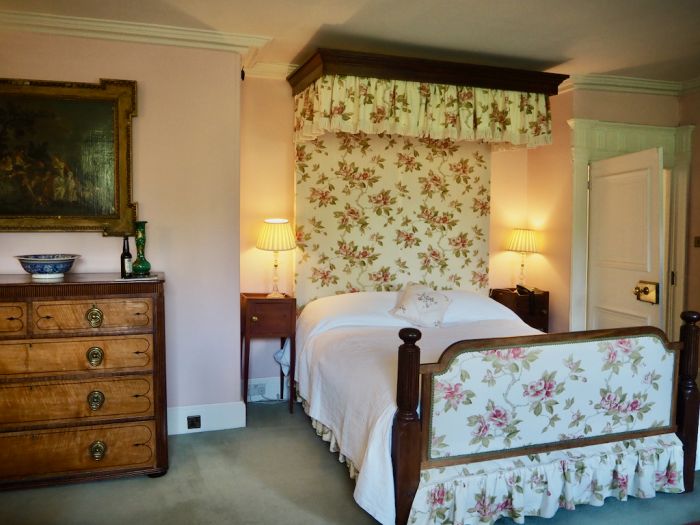
Stepping inside felt like stepping back in time faced as we were with a veritable display of vintage furnishings including an open marble fireplace, porcelain ornaments, cream-colored cloth armchairs with bright floral motif, a footstool, writing table, canopy bed and wall paneling. Our bathroom, separated along a short corridor, featured shower and tub.
We ate breakfast in what is called the ‘Still Room,’ maybe because it’s so quiet there. It’s where servants in a bygone era sat listening for the bells in the hallway outside beckoning for their help. Here, with duck-egg blue paneling, and surrounded by porcelain and silver utensils, we ate our hardy porridge out of Royal Albert bone china bowls, served up by enthusiastic chef Kellie.

A good part of our day was spent exploring the house and grounds. The High Drawing Room, an extension added in the 1500s and the largest room in the house, contains a rare harpsichord made in 1651, mahogany Chinese Chippendale chairs, a walnut marquetry table and paintings overdoors representing music, art, drama and architecture, thematic of the Scottish Renaissance. Other furnishings include portraits lining the walls, a vintage chess set and an ornate marble fireplace.
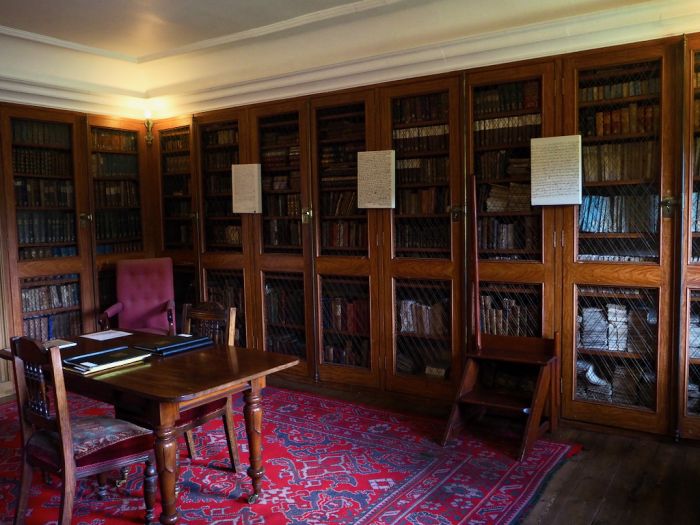
The Kings Room, so named because the rulers of Scotland stayed there when on hunting trips, featured a wooden cradle used by Mary, Queen of Scots, for her infant son, James, who later became King of both Scotland and England. Mary and her husband, Lord Darnley, who was later murdered in Edinburgh, slept in the four-poster bed there.
The Library at Traquair is a formidable one – floor-to-ceiling shelves filled with around three thousand leather-bound books, many dated between 1700 and 1740. Two 18th century wooden globes on a desk, portraits of philosophers and writers around the ceiling and a chair designed to sit on as if riding horseback add to the studious ambience.
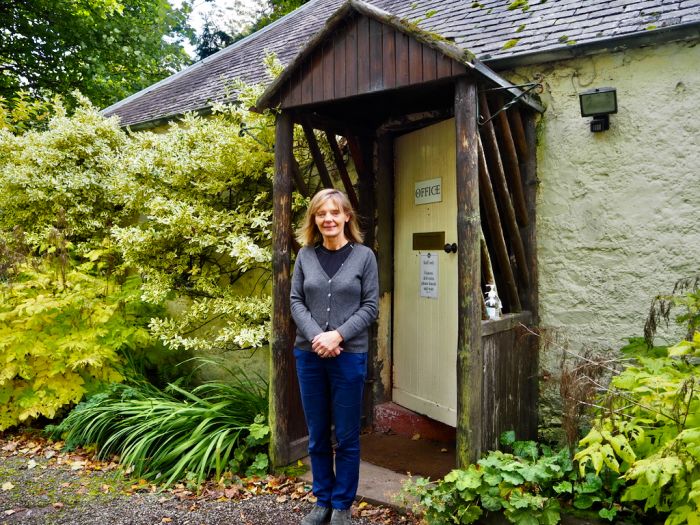
Other rooms include the oldest in the house, the Dressing Room, lined with family portraits, where a cupboard is ingeniously hidden inside wall paneling. An impressive collection of Victorian and Edwardian dolls from the 1840s fills two other rooms while the so-called Priest’s Room features a secret chapel with ‘escape stairs’ disguised as a bookcase, used during Penal Times when hosting Catholic Mass was forbidden. The priest’s white vestments there were disguised to look like quilted bed covers. A mahogany chest contains documents dating as far back as the 1300s. The Dining Room, is one of the modern wings,’ built in 1694, seats twenty people, complete with 18th century Flemish linen tablecloths, Bristol green glasses and a silver punch bowl. For more information on Traquair and its illustrious history, check out a book written by Catherine entitled ‘A Family Life Revealed.’
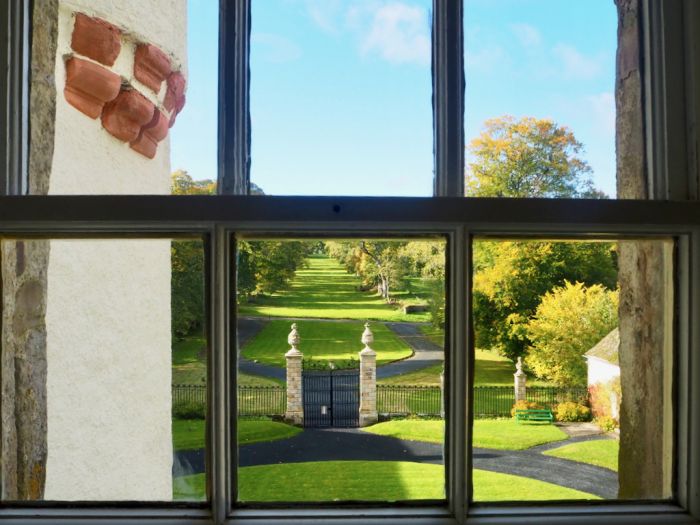
Outside, there are 100 acres of grounds to explore, including a maze comprising over 1,500 Leylandi cypress trees and beech. Beyond the maze is a river, a croquet lawn, tennis court and a children’s playground. A gift shop and several craft workshops are also located on the grounds, as well as the 1745 Cottage Restaurant in the walled garden where visitors can enjoy snacks and lunches and taste Traquair’s very own house ales.
The impressive Bear Gates at the far end of the demesne bears an interesting story. They have remained closed since Price Charles Stuart, best known as Bonnie Prince Charlie) who tried to become king of Scotland and England, rode through them, saying he would return when another Stuart monarch sits on the throne. That hasn’t happened yet, so the gates remain closed.
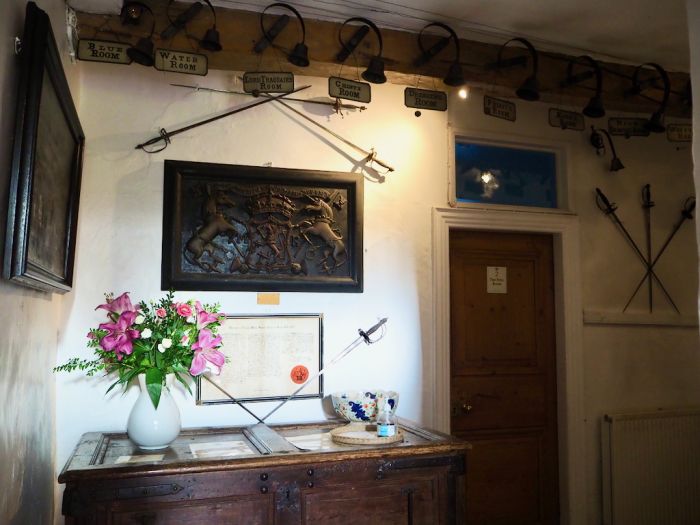
Of course, every respectable old house should have a riveting ghost story associated with it and Traquair is no exception. Seemingly, Lady Louisa Stuart, who lived alone at the house and died at the tender age of 99 in 1875, takes a stroll around the grounds whenever the notion suits her. Alas, we didn’t get the chance to chat with her.
For a historic holiday in the midst of picturesque Scottish countryside or for personal or professional events of all kinds, Traquair makes for a fascinating choice.














